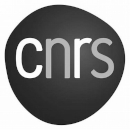
- This event has passed.

The book Making with Data, co-authored by Samuel Huron, Till Nagel, Lora Oehlberg, Wesley Willett, a collective of researchers from the CNRS, Télecom Paris, and the Institut Polytechnique de Paris, is dedicated to approaches based on data representation through a collection of 25 physical visualization works produced by researchers, designers and artists. It offers a panorama on how to liberate data from screens and "make the digital tangible" as Hiroshi Ishii, professor at the MIT Media Lab who wrote the preface, would say.
As we are all overwhelmed by the flow of data and digital information, the physical representation of data is part of the thinking about how to deal with it, and the rise of the Do it yourself movement, the maker community and digital crafting. The convergence of these two trends is creating a new aesthetic approach: making things with data.
The visualization of physical data is developing in many sectors, thanks to the progress of 3D printing and robotics (fablab, automation...) but also in other more traditional dimensions, such as craft, theater or street collection. All these approaches based on the representation of data allow their physical visualization, whether for analytical, participative or artistic purposes... The creation of physical works based on data is one of the least documented fields today. And yet these works touch several fields of design and art: ceramics, paper, cabinet, architectural intervention, live performance or robotics.
The contribution of Making with Data
Making with data presents a collection of testimonials from over 25 international artists, designers and scientists, who document the process of designing and creating new physical representations and experiments with data
In more than 25 beautifully illustrated chapters, international artists, designers, and scientists each explain the process of creating a specific data-driven piece, illustrating their practice with sketches, photos, and design objects from their own studios. Featuring influential voices from computer science, data science, graphic design, art, craft, and architecture, Making with Data is accessible and inspiring for enthusiasts and experts alike. In addition to presenting this overview, the process of creating the visualization is described for each of these works, from retrieving the data, to choosing the design, to the various stages of fabrication. This book opens the door to the researchers' laboratory, the designers' studios, and offers a direct and accessible explanation of the decisions that guided the conception of these visualizations, as well as the current reflections on their use.
The book is divided into five themes (craft, participation, digital production, actuation, and environment), each preceded by an introduction that examines the broader social, scientific, and artistic implications of giving physical form to data. In particular, this book explores the process of creating these artifacts, highlighting the design decisions, considerations, methods, and fabrication techniques that modern creators use when creating with data.
 "Encoding our memories in objects is a subject that is both very old and very current. It seems to be undergoing a contemporary renaissance, in the forms of representation as well as in the technologies and modes of manufacture employed: the very great diversity of works presented in this book bears witness to this."
"Encoding our memories in objects is a subject that is both very old and very current. It seems to be undergoing a contemporary renaissance, in the forms of representation as well as in the technologies and modes of manufacture employed: the very great diversity of works presented in this book bears witness to this."
"We are very proud to have been able to expose in this book the design processes of avant-garde creators and researchers, very diverse in their fields of intervention and expertise, as in the embodiment of their projects, and their approaches. This book is both an excellent introduction for students who might be starting out in the field of data representation and an exciting account for experts who would like to diversify their creative methods." Samuel Huron - Editor of Making with data







